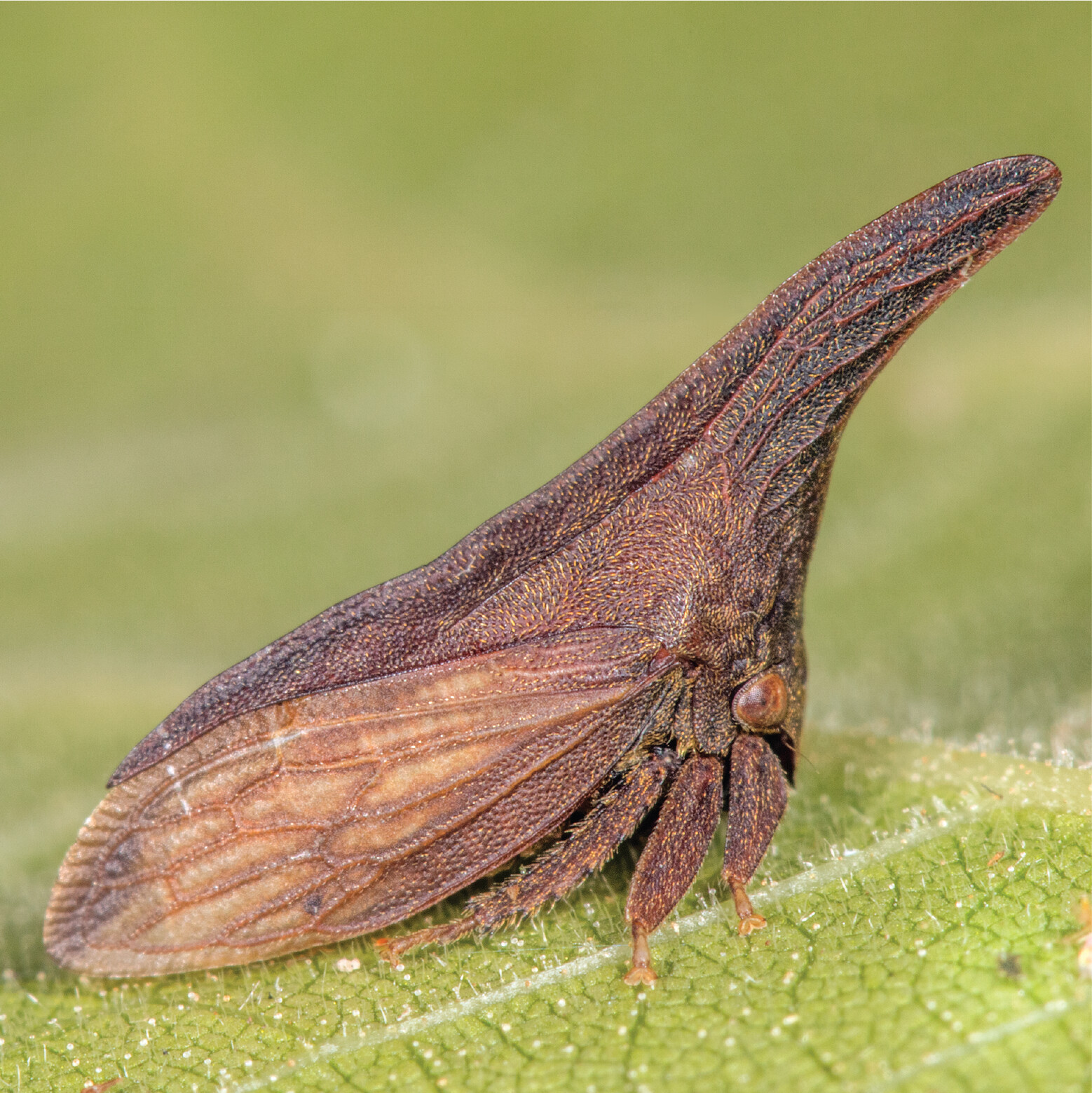
Imaging Techniques Observing soil bacterial ecosystems
Marc S. Lavine

3D fluorescence image of a thick section of maize roots
PHOTO: OUMENG ZHANG, REINALDO ALCALDE, DIANNE NEWMAN AND CHANGHUEI YANG
Although subsoil plant growth is widely believed to be limited to the activity of the roots, in reality, there is a complex ecosystem that is influenced by a range of microorganisms known as the rhizosphere. Zhang et al. advance the ability to study soil microbes by combining quantitative phase imaging with three-dimensional fluorescence microscopy. This approach enables a depth of field of more than 100 micrometers, thus reducing the number of captures needed to form an image of the roots and bacteria and thereby limiting photobleaching. Further, the sensitivity of the technique enables observation of microbial growth, competition, and gene expression in the early stages of colony development.
SIGN UP FOR THE SCIENCEADVISER NEWSLETTER
Species Interactions Outsized effects of tiny herbivores
Bianca Lopez

Phloem-feeding insects such as treehoppers (Enchenopa latipes) help shield caterpillars from parasitic wasps.
PHOTO: DOUG WECHSLER/MINDEN PICTURES
Keystone species have a major effect on shaping an ecosystem, often through their links to other species. Anderson et al. showed that phloem-feeding insects such as treehoppers play a large and unexpected role in communities living on white oak trees: suppressing parasitism on caterpillars. From a baseline of 0%, the parasitism rate increased to 19% when caterpillars were experimentally removed from oak seedlings. Ants, which tend to be phloem feeders, had no influence on this relationship. Instead, phloem feeders reduced the concentrations of volatile organic compounds that plants emit when damaged by herbivores, which may limit parasitoid wasps’ ability to locate caterpillars.
Cell Biology Nuclear aggregates break the envelope
Stella M. Hurtley
Huntington’s disease is an incurable neurodegenerative disease caused by a polyglutamine (polyQ) expansion of the huntingtin protein, which results in the formation of polyQ aggregates within the nucleus. Working in cells expressing huntingtin, Korsten et al. observed these aggregates directly inducing rupture of the nuclear envelope. Live-cell imaging revealed that nuclear polyQ aggregates deform the nuclear envelope, and these ruptures were often repaired incompletely. The ruptures were also found to coincide with deformations and scarring of the nuclear lamina, a scaffold of proteins that line the nuclear envelope and support nuclear integrity. Expansion microscopy further revealed polyQ fibrils protruding into the cytosol at rupture sites. Thus, polyQ aggregate–induced nuclear envelope ruptures may contribute to Huntington’s disease and other polyQ disease pathology.
Artificial Intelligence ChatGPT can’t outperform doctors
Ekeoma Uzogara
One of the most consequential developments in generative artificial intelligence (AI) will be its integration into electronic medical records. If AI can reliably extract and consolidate vital information from medical records more rapidly than health professionals can, more lives may be saved during emergencies. However, research by Burford et al. suggests that this is still a work in progress. The authors analyzed more than 54,000 records of patients injured in bicycle or scooter accidents and then asked ChatGPT-4 to determine whether patients wore helmets during collisions, which is a crucial factor in injury severity. ChatGPT-4 was not able to extract that information as reliably as humans were, likely because of the unstructured nature of medical notes. Caution is warranted when delegating medical tasks to AI.
Innate Immunity Schooling innate immune precursors
Sarah H. Ross
Innate immune cells respond to general signs of infection without building memory of specific pathogens. However, training these cells early during their development may prime their protective mechanisms. Sun et al. used single-cell sequencing to profile hematopoietic stem cells and immune progenitor cells isolated from the bone marrow of individuals before and after receiving the Bacille-Calmette-Guérin vaccine. After vaccination, hematopoietic stem cells had increased expression of genes that could promote neutrophil and monocyte differentiation. Progenitor innate immune cells showed changes to chromatin accessibility at loci associated with genes involved in innate immunity. These changes were correlated with an augmented capacity of fully developed immune cells in the blood to secrete interleukin-1β.
Science Education Who are the change agents?
Melissa McCartney
As STEM departments work to increase their diversity, one potential strategy is to embed change agents that can directly promote change efforts. Teaching professors, who are teaching focused yet engage in scholarly activities and service, could be uniquely suited to this role. Wilton et al. asked individuals across five STEM departments to identify faculty who were influential in six domains of instruction and pedagogy. They then examined the structure of social interaction networks among these faculty members, and their results showed heterogeneity across domains. For example, teaching strategy networks are highly connected and involve most of the department, whereas the diversity, equity, and inclusion (DEI) influence network comprises a significantly smaller population. Importantly, the results also showed that teaching professors are influential across all domains of instruction, but they are disproportionately more influential in the DEI influence networks.
Quantum Communication Beating noise with entanglement
Ian S. Osborne
Quantum communication allows distant parties to exchange information with confidence that quantum mechanics provides security from an eavesdropper. In optical implementations, the process typically involves quantum key distribution comprising entangled pairs of photons and can be done over city-sized distances. However, the quantum states are fragile and can be susceptible to noise. Zhong et al. show that higher dimensional entanglement can alleviate the problem of noise. Using polarization and time-bin encoding, they demonstrate the distribution of quantum keys over a 50-kilometer noisy fiber channel. The use of high-dimensional entanglement provides a route to developing resilient quantum networks.
 Print
Print


